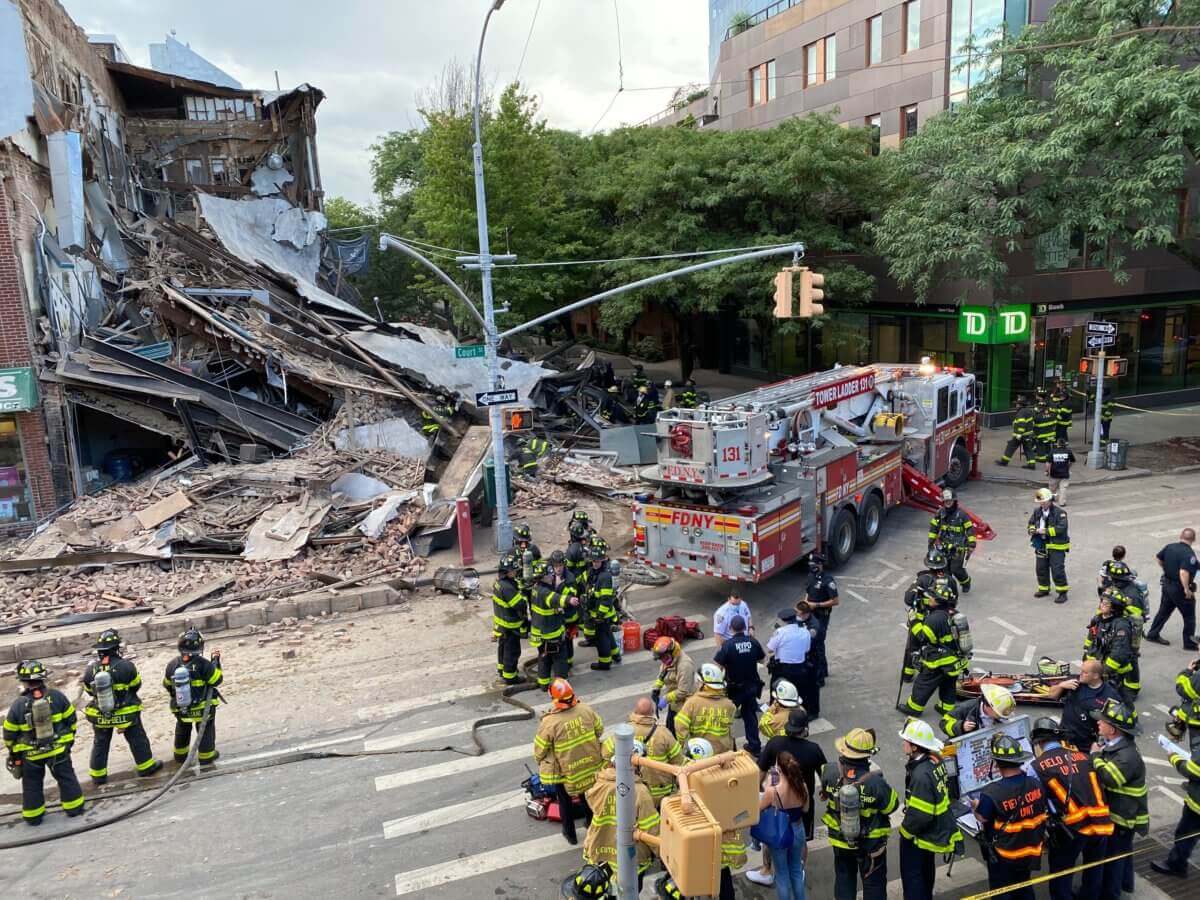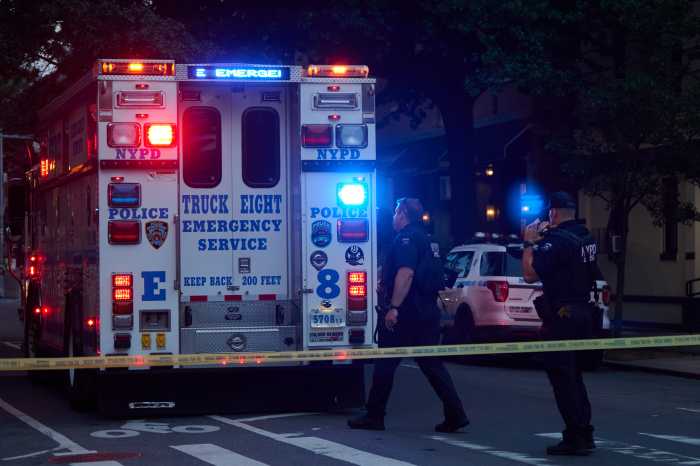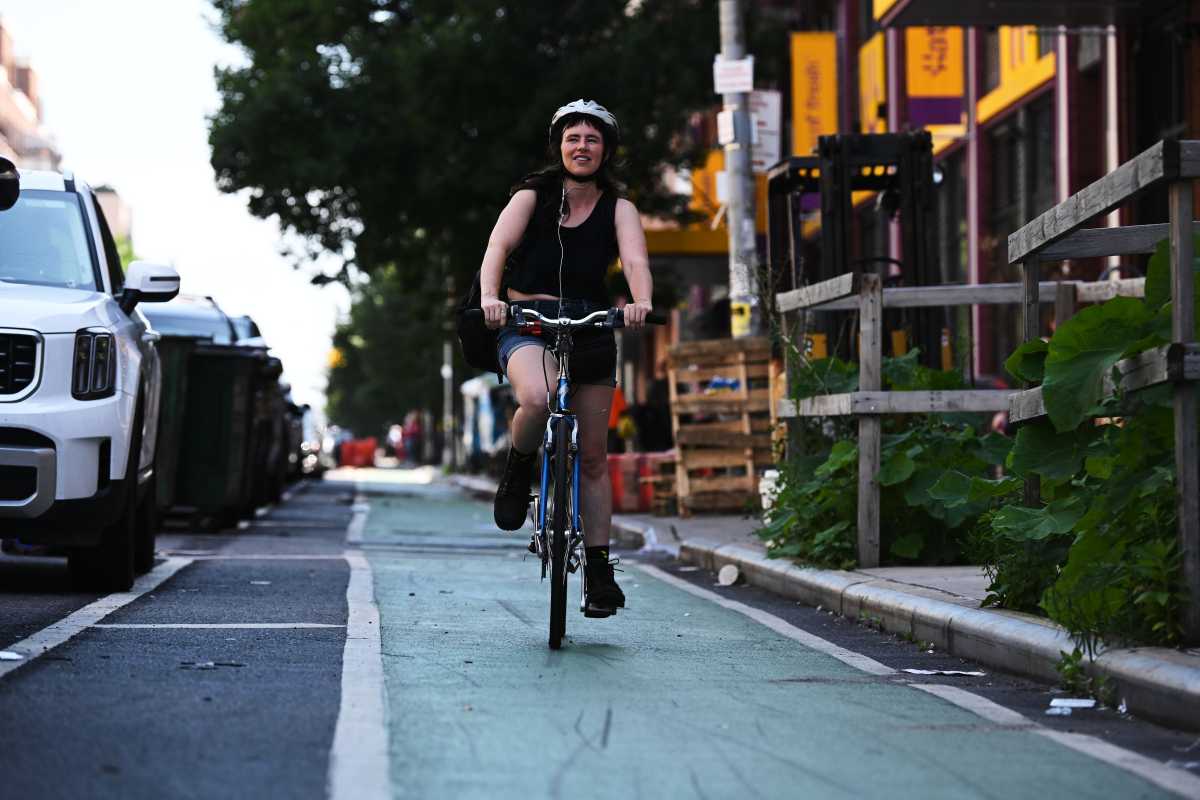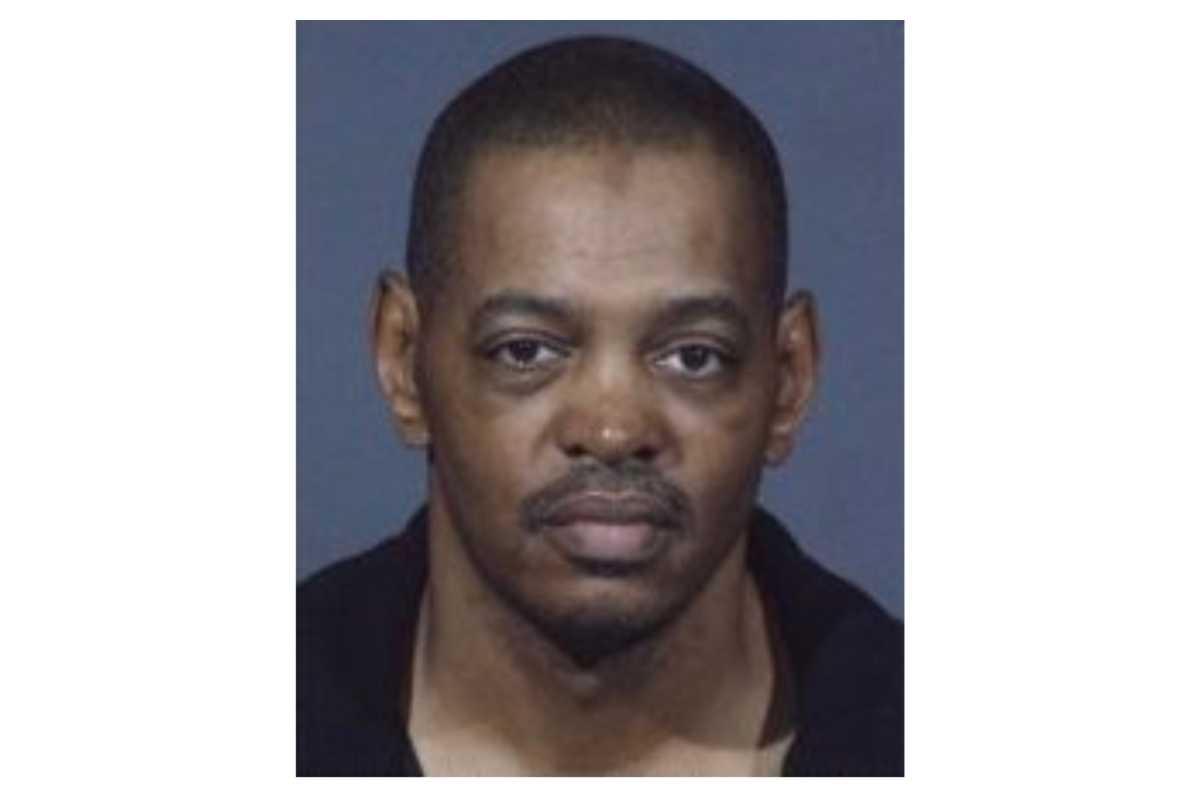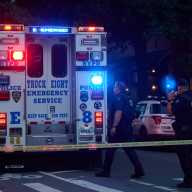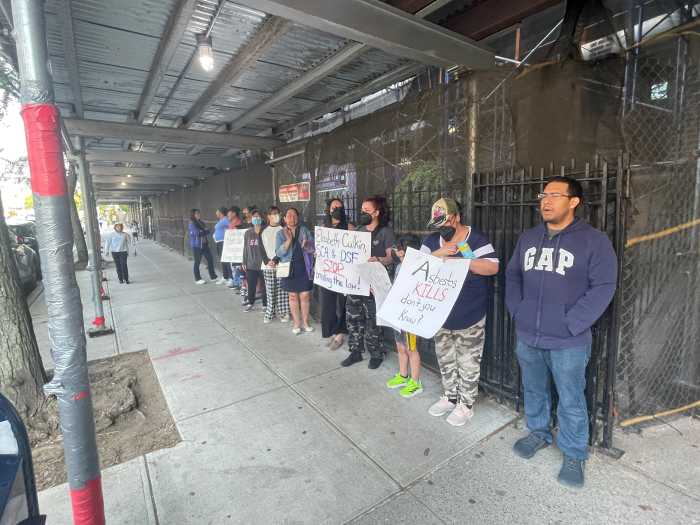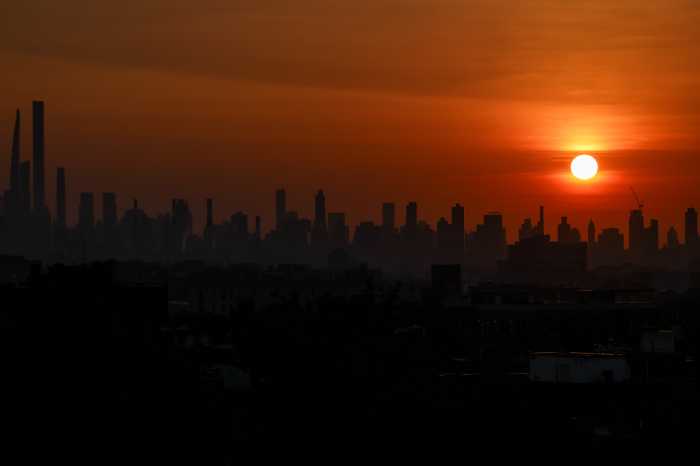While New Yorkers wonder if last week’s deadly condominium collapse in Florida might have been preventable, they count their blessings that a building failure in Brooklyn last year didn’t result in similarly tragic consequences.
But they might also be a little surprised to learn that city investigators have yet to find anything to substantiate criminal charges against the property owner or building inspectors — even though there had been more than a decade of complaints about the Carroll Gardens row house’s instability.
“The investigation is in its final stages and has not substantiated any criminal charges,” Department of Investigation spokesperson Diane Struzzi told amNewYork Metro.
DOI launched a probe last year into the owner of the building at 348 Court St., at the corner of Union Street, which came crashing down on the afternoon of July 1, 2020, luckily only causing minor injuries to one person as the fitness studio was empty amid the COVID-19 pandemic.
The agency’s inquiry also examined the Department of Buildings’s role, which had received complaints about the building’s instability dating back 15 years, and owner Ki Hyo Park had shelled out $15,685 in fines for failing to keep the building up to code in two years leading up to the implosion. Park could not be reached for comment.
Struzzi did not say when the report would be released but advised this reporter to file a Freedom of Information request in order to get the document.
A complaint from 2005 warned of the building’s side wall on Union Street bulging out onto the sidewalk and a caller warned the authorities the following year that the building looked as if it was about to fall or collapse, according to DOB records.

DOB repeatedly issued violations to Park over the years, but the landlord simply paid the fines without addressing the issues, according to a group of local politicians, who urged DOI in a letter to investigate the owner and DOB to see whether the city should have been more “aggressive” in keeping the building sound.
‘We got incredibly lucky last year’
One of the authors of the missive, Brooklyn Councilman Brad Lander, urged DOI to soon release the final report of the investigation so that officials can learn from the collapse.
“I’m not happy that here we are a year later and we don’t have the report on what happened and what we should learn from it,” Lander told amNewYork Metro in an interview. “If we know that there was a lot of information that this building might collapse and those warnings were not heeded then at minimum we need to learn the lessons.”
The local pol – who is currently in the lead in the race to be the city’s next comptroller — drew a connection to the disastrous collapse of a 12-story condo tower in Surfside, Florida, on June 24, where at least 10 people have died and another 151 are unaccounted for as of Monday evening, according to the Miami Herald.
“What happened in Miami is a sobering reminder that this is urgent stuff,” Lander said. “We got incredibly lucky last year that no one died on Court Street.”
While the cases involve two very different buildings in cities with varying building regulations, the tower in the Sunshine State also showed warning signs years before, with a 2018 engineer’s report warning of major structural damage, the New York Times reported.

DOB touts strong New York regulations
A DOB spokesman said that New York has some of the strongest building codes in the world, which they will continue to enforce.
“The building collapse in Florida is a shocking tragedy, and we continue to hope that rescue crews will be able to find more survivors at the site,” said Andrew Rudansky in a statement. “While we don’t know yet what caused the collapse, New Yorkers should know that our city has among the strongest building codes and most stringent high-rise inspection programs anywhere in the world. We will continue to diligently enforce these regulations as the safety of our fellow New Yorkers is our highest priority.”
The city has periodic inspection programs required for larger buildings, which legally have to undergo several different inspections by construction and design professionals every year, and the agency can immediately order a building to be vacated or issue emergency orders to address hazardous conditions.
State Senator Brian Kavanagh, who also signed onto the letter with Lander last year, said cases like the one in Carroll Gardens can be hard to prosecute on a criminal level unless officials can show there was intent, but the lawmaker said he was eager to see DOI release the report to see if there are any civil charges.
“It’s difficult to establish criminal liabilities but there are serious penalties that can be imposed if the owner has been negligent,” the state lawmaker said in an interview. “We do want a full accounting of the extent to which the city and the buildings department, whether there’s something we can learn from that experience and whether the city can do more.”
Just weeks before the gym collapse, DOB inspectors found construction workers removing bricks from the bulging side wall on June 10, and immediately issued a Stop Work Order, telling the owner to install a sidewalk shed and hire an engineer to study the stability of the entire building.
Workers set up the sheds a few days later, but DOB never got the report, Rudansky told this reporter at the time.

The DOB inspector decided not to issue a Full Vacate Order, which requires officials to deem it unsafe to be inside, or a so-called Immediate Emergency Declaration for Demolition, a more extreme measure usually reserved for buildings that are visibly about to collapse, such as burned-out houses or leaning structures.
When asked what lessons the agency had learned from the Court Street collapse, Rudansky declined to comment directly saying only that the agency continues to investigate the incident.
“Our investigation into the collapse of 348 Court Street, Brooklyn, is ongoing,” he said.
Read more: Doctor injured in City College protest, investigation ongoing



